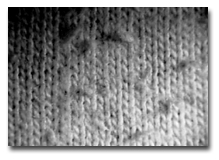For many products, an established test protocol has been developed to ensure test results are comparable. This allows a company to demonstrate they meet a minimum performance standard. Or testing can help a company gain a competitive advantage by showing how it performs compared to the competition. Another advantage of testing is to evaluate the impact of supplier or material changes before they are implemented. In today’s competitive environment, lower cost options may be appealing but have unintended negative consequences on product quality.

While a lab test may not represent the actual conditions materials are exposed to, testing can duplicate many real world conditions allowing you to have higher reproducibility with your evaluations. And following an established methodology helps ensure your results will be both repeatable and reproducible.
Abrasion testing is used to test the abrasive resistance of solid materials. Materials such as metals, composites, ceramics, and thick (weld overlays and thermal spray) coatings can be tested with these methods. The intent of abrasion testing is to produce data that will reproducibly rank materials in their resistance to scratching abrasion under a specified set of conditions.
Standard abrasion testing methods should not be used to predict the exact resistance of a given material in a specific environment. Its value lies in predictively ranking materials in a similar relative order of merit as would occur in an abrasive environment.
